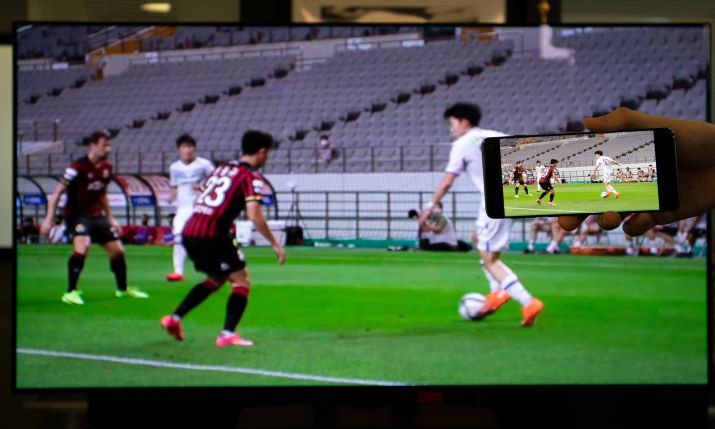Making a difference: Native Waves looks at how personalisation and interaction are enhancing the user experience

Nativewaves technology being used on a K League match
By Christof Haslauer, Native Waves CEO and founder.
In broadcast terms, the most notable development of 2022 was the acceleration of production in the cloud and the extent to which both broadcasters and equipment manufacturers embraced this trend.
Traditionally, live sports events were captured for television by outside broadcast trucks crammed with processing equipment that could take care of a lot of production at the venue. Although remote production was often discussed as the way forward, the catalyst for change was the COVID pandemic that saw remote production becoming more mainstream. Capture still happens at the event, but content is now fed to the cloud where much of the processing, quality control and transcoding takes place.
You could say this is one of the few good things to come out of the pandemic; broadcasters and event organisers are now embracing the cloud and using its power to reduce costs and their carbon footprint by not having to transport so much equipment and so many staff to each venue.
This year has also seen hybrid workflows become more mainstream as the ability to switch between standard SDI and IP becomes easier. Hybrid solutions make sense as there are very few broadcasters that could afford an immediate transition to IP. In addition, SDI workflows still have a lot of benefits.
OTT on the up
2022 has also been the year when traditional broadcasters have either added an over the top (OTT) offering or significantly enhanced it. Linear broadcasters have always looked at OTT as the poor cousin, but thanks to the popularity of streaming services such as Netflix and DAZN they are now having to rethink. They don’t really have a choice because it is a case of sink or swim.
Consider the launch of Sky Glass, for example, which uses WiFi to deliver content, and the news that Sky is planning to do away with dish receivers for households in the UK. The focus is now firmly on IP-based delivery to the end consumer, which is exciting because it opens up a lot of creative possibilities.
Technology is changing fast and it’s a constant process. The advent of 5G is also driving new developments in broadcasting and democratising content creation because anyone with a 5G-enabled smartphone will soon be able to contribute material they have captured to the cloud. This was considered by an IBC Accelerator project, which NativeWaves took part in at the end of 2021. The project looked at the role of 5G in football stadiums and the extent to which it might positively impact the production process. Fan engagement, including the possibility of fans uploading their own content from their smartphones, was one of the things we examined.
Standing out
Overall, 2022 was the year when broadcasters realised the importance of product differentiation. Sending the same linear TV signal to streaming services wasn’t enough because audiences wanted more. Personalisation and audience interaction are now key to the services broadcasters are developing. This might take the form of action replays, additional data feeds, different camera angles or even in-programme betting.
The opportunities are endless and there are many companies in the market, including NativeWaves, that are developing technologies that make this possible. Just sending your linear feed to your OTT services isn’t enough. You have to differentiate between the two and make yourselves different from your competition.
I see this trend continuing as we move into 2023 because we know from talking to viewers that they like having the opportunity to personalise their end user experience. They want easy access to content relevant to them, and to consume it where they want, when they want and from their own perspectives.
This demand is now driving broadcasters and streaming services to take a serious look at how to offer these experiences. User engagement rather than subscriber numbers is becoming the new currency, with broadcasters now much more focused on how long their audience engage with their content rather than just how many subscribers they have. Advertisers are also interested in this aspect as it allows them to target and monitor their campaigns much more easily.
As well as an enhanced focus on the user experience, I think 2023 will be the year when cloud production will become the norm. Major sporting events such as the FIFA World Cup in Qatar will be the testbeds for a lot of new and exciting technology. Not everything will be a success, but what does work will soon be adopted by the industry at large because that is the way technology has always moved forward.
5G will play a big part. If it is adopted by the larger stadiums – and if it works as well as everyone hopes – it has the potential to transform the live sports experience. We are at an exciting point in the evolution of the broadcast industry. It is less than 100 years since the very first television broadcast, so who knows where we will be in another 100 years?
